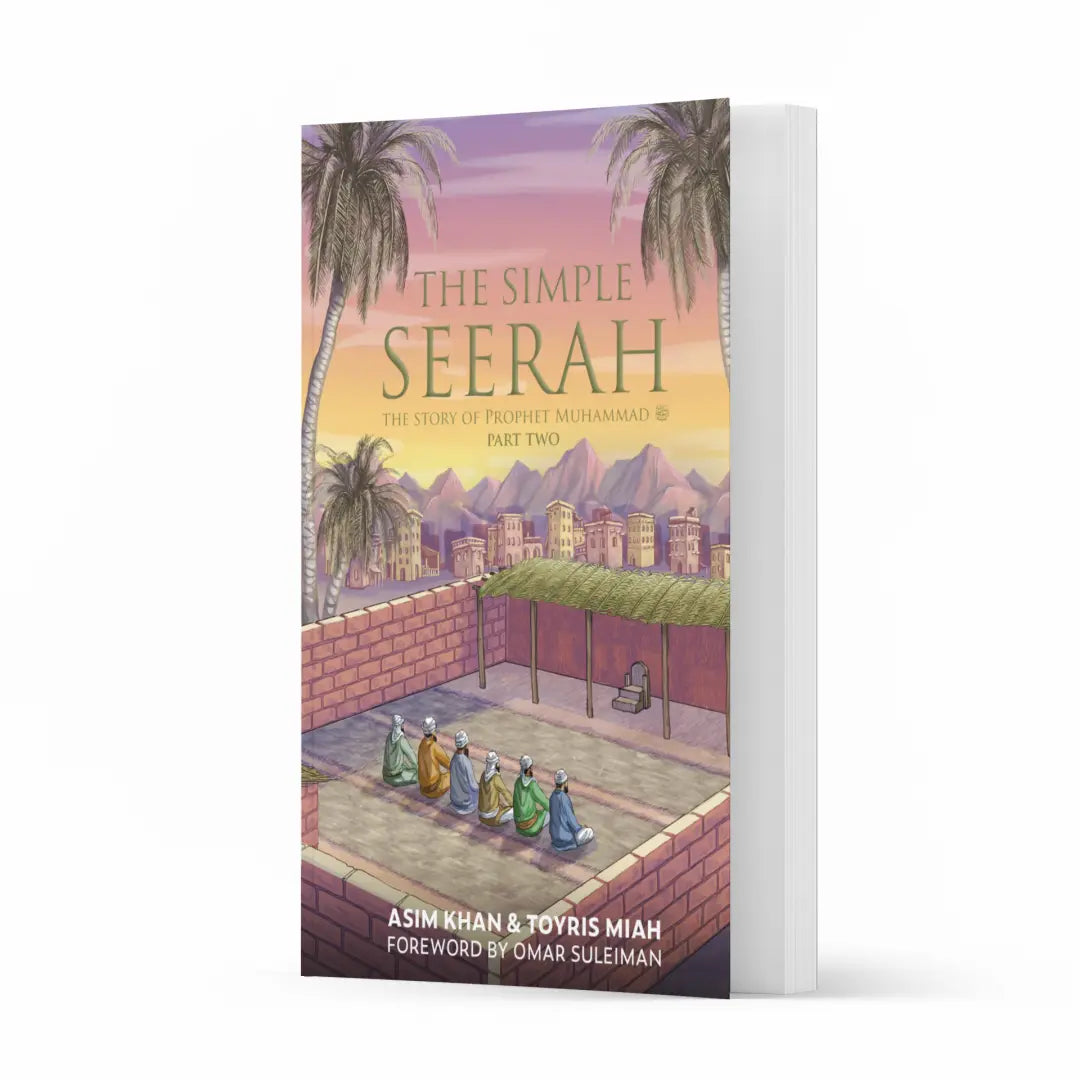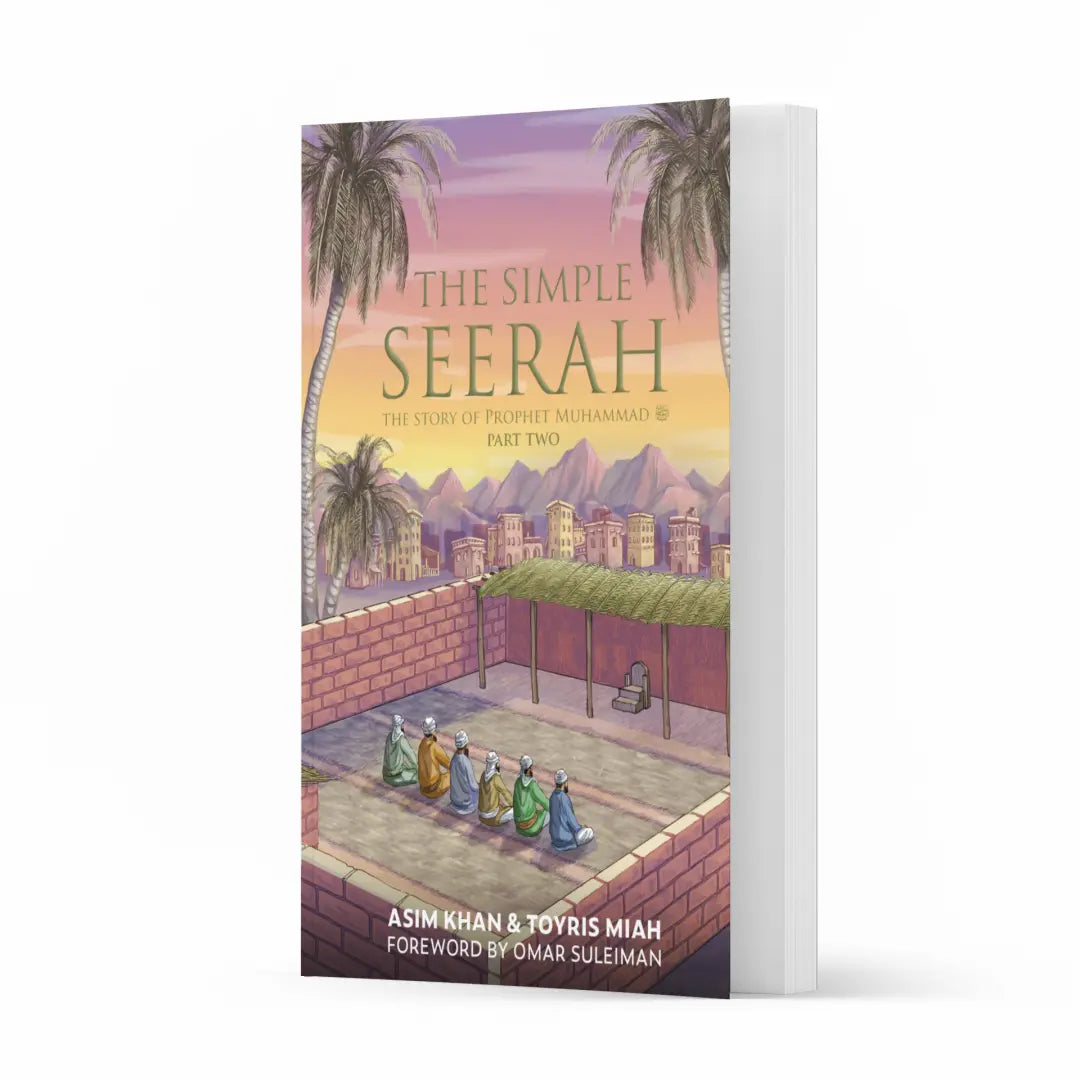Detailed Description
It’s quite incredible when you think about it, that this book and many others like it are all written about a man who did not know how to read or write. The Prophet Muhammad is the most influential and loved human being to have ever walked the face of this earth. The things that he said and did over fourteen hundred years ago still impact the lives of billions around the world today. This book tells the story of Islam from the beginning; how an entire city tried to kill one man simply because he spoke the truth about God, calling for justice and the fair treatment of women and the poor. It is a tale of searching for truth, forming meaningful bonds beyond status or personal interest, and overcoming obstacles for the sake of the Almighty. Having dedicated much of his life to explaining the deeper meanings of the Qur’an to non-Arabic speakers, Ustadh Asim Khan has now taken on the challenge of relating the life of the Prophet Muhammad in true storytelling fashion. This style of the Seerah is yet to be experienced in the English language and promises to transport the reader back to the time of the Prophet and his Companions.Frequently Asked Questions
1. What does “The Simple Seerah: Part Two” cover?
Part Two of “The Simple Seerah” series continues the story of Prophet Muhammad (peace be upon him) and likely covers the middle period of his Prophethood, especially after the migration to Madinah. In Part One, we saw the early years and the Makkan period; Part Two would then narrate major events in Madinah: the forming of the first Muslim community there, key events like the Battle of Badr, Battle of Uhud, perhaps up to the Battle of Khandaq (the Trench) and the Treaty of Hudaybiyyah. Essentially, Part Two deals with how Islam grew as a social and political community in Madinah, the challenges the Muslims faced from opposing forces, and the Prophet’s leadership during those times.
2. Do I need to read Part One before reading Part Two?
It’s highly recommended to read Part One first, since it sets the stage. Part Two will assume you know who the main companions are and the significance of why Muslims left Makkah for Madinah (the Hijrah). While Part Two will still be understandable on its own (because the author will likely give a bit of recap or context when introducing new events), the emotional and narrative impact is much better if you’ve followed the story from the beginning. Think of it like a trilogy – the middle installment makes more sense and feels richer if you’ve read the first. So, for a complete experience of the Seerah, start with Part One then move to Part Two.
3. What style of writing can I expect in “The Simple Seerah: Part Two”?
The style remains engaging and easy-to-read just like Part One. Asim Khan, the author, writes in narrative form, almost like a story novel, while sticking to authentic seerah details. He’ll describe events in a flowing manner, including dialogues or scenarios based on historical reports. The language is modern and clear—so teenagers and adults alike can enjoy it. Importantly, he likely continues to highlight lessons and morals gently through the story. For example, when describing the unity of Muslims in Madinah (Ansar and Muhajirun brotherhood), the text might underline the value of brotherhood and sacrifice. When covering Uhud, it might talk about the consequences of not following instructions (as happened with the archers) in a way readers grasp the lesson. So, it’s both informative and subtly educational.
4. Are the battles described in detail? I’m concerned it might be too intense for a younger reader.
Part Two does involve battles, which are inherently action-packed parts of the Prophet’s biography. However, given the series’ target audience (teens/young adults), the descriptions are factual but not gory. They focus on the key points—like the bravery of companions, the strategies, the outcomes—rather than graphic details. The author’s aim is to convey what happened and why it’s important to Islam’s history, all in a reader-friendly way. So while a younger reader (say 10-12) might need occasional explanations from a parent about some scenes, it is generally written in a way that’s appropriate and not overly violent in tone. It highlights heroism, faith, and the human side of these events (like the sorrow when Muslims faced losses at Uhud, or the joy at their victories), keeping the tone inspiring rather than dark.
5. What will I learn from Part Two that’s crucial to understanding the Prophet’s life?
Part Two contains many pivotal moments:
- You’ll see how the Muslim community established the Constitution of Madinah, an early model of a multi-faith society.
- You’ll learn how the Muslims defended themselves in battles like Badr and Uhud, and what those meant for the young Muslim nation.
- You’ll witness the personal trials of the Prophet, like the loss of his daughter Ruqayyah around Badr time, or injuries he sustained at Uhud – showing his resilience.
- The way the Prophet forgave and dealt with betrayals (e.g., some tribes in Madinah breaking alliances) teaches mercy and justice.
- By the end of Part Two, possibly around the Treaty of Hudaybiyyah, you’ll understand how a seemingly unfavorable peace treaty set the stage for the spread of Islam (a huge lesson in trust in Allah’s plan).
All these are critical in seeing the full picture of the Seerah: the transition from being a persecuted group in Makkah to an organized, principled society in Madinah that’s on the verge of peacefully conquering Makkah (which will likely be in Part Three). So Part Two is about the growth and testing of the Muslim community – understanding it gives insight into Islamic principles of statecraft, community building, and patience through trials.

 Download Book Preview
Download Book Preview
